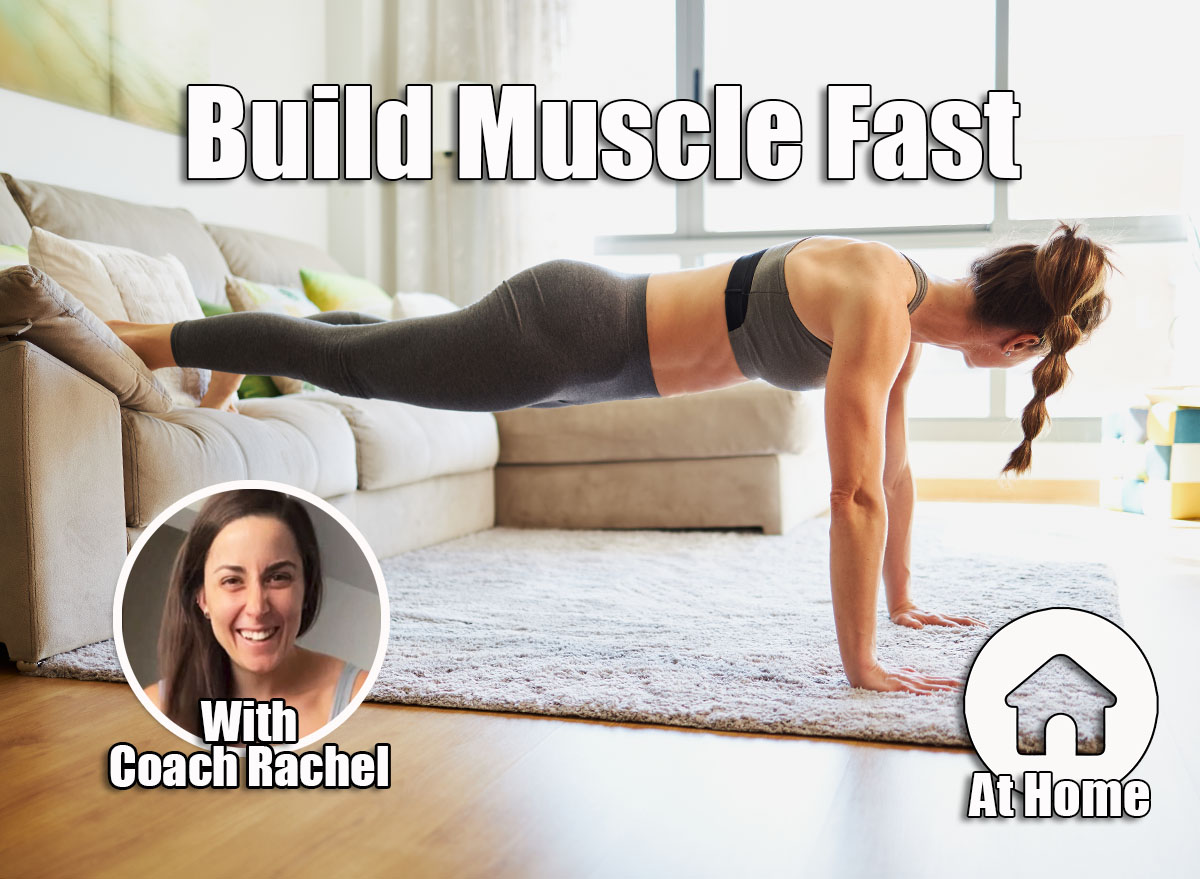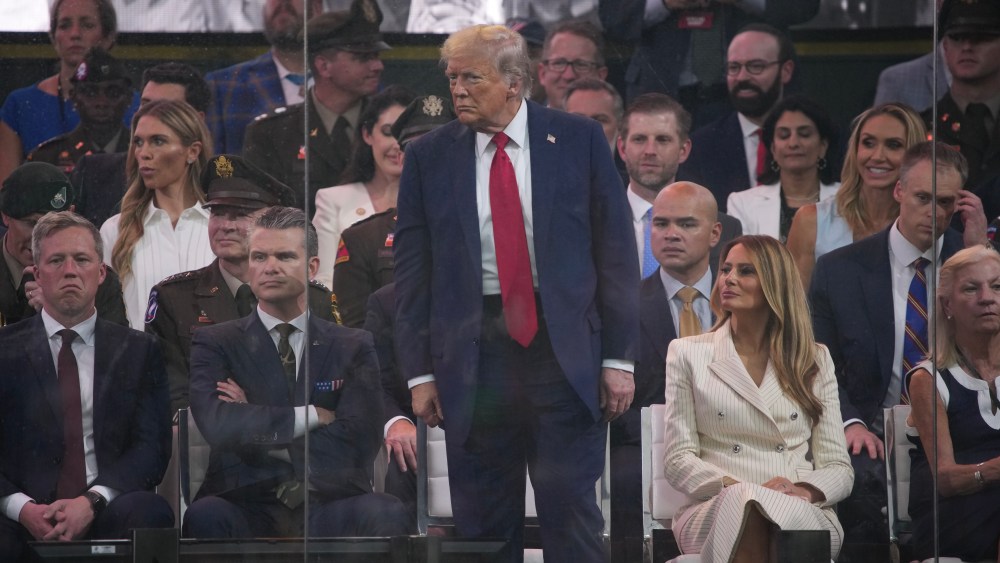Want to build muscle without weights? No problem. Performing bodyweight exercises with tension, intensity, and proper form is a stellar way to build muscle—and just as effective as lifting. We spoke with an expert and have everything you need to know about building muscle with just four bodyweight moves—no trip to the weight room required.
“There is a certain level of strategic training techniques, mainly progressive overload to be able to stimulate muscle growth,” says Rachel Pieroni, NASM CNC, CPT with Pure Barre. “Progressive overload is a method of strength and hypertrophy training, where one gradually increases the intensity by placing added stress on the musculoskeletal and nervous systems; this stimulates muscle growth and strength gains, and is thus necessary to achieve a strong body.”
You can perform many no-equipment exercises right at home, using your own bodyweight. Rachel shares four of them that you can add to your routine to build muscle like crazy.
Squats


Squats offer many variations you can perform. The goblet squat, back squat, sumo squat, and bodyweight squat are just a few. This exercise requires hinging at the knees, hips, and ankles.
- Start standing tall with your feet planted hip-width apart and toes pointing forward.
- Gently move your hips back and down, but keep your chest tall as you descend.
- Once you reach the bottom of your squat, push through your heels and brace your core back to the standing position.
Pushups


Pushups are a must do when strength training—and you don’t need any equipment for this efficient exercise.
“It is important to note that pushups are a full-body exercise; however, the main target muscles include: the chest muscles or pectoralis major and minor, as well as, the front of the shoulders, the anterior deltoids,” Rachel points out. “In terms of maximizing strength gains; continue to work on increasing the range of motion; i.e. depth of the push-up, while maintaining proper form. Additionally, if you can also increase the decline, to level up the intensity of the movement without adding weight. For example: start on your knees, then graduate to your toes, then move into a decline push-up where your feet will be elevated behind you. The larger the decline = the more weight you are pushing. This naturally will equate to more strength and muscle growth.”
- Begin in a straight-arm/high plank position.
- Move your hands out slightly wider than shoulder-width, rotating your elbows downward just a bit.
- Extend both legs back, keeping your shoulders pressed down and your core tight.
- Tuck your hips in to zip your core. Do not dip into your lower back.
- Hold your gaze forward, and bend your elbows slowly to lower your chest toward the ground.
- Upon reaching the lowest level, push the floor away to return to the standing position.
Crunches


Crunches target your front ab muscles, the rectus abdominis.
“Proper progression for crunches would include improvements in overall form, as well as, added repetitions and sets,” says Rachel. “You can also focus on keeping constant tension by always keeping shoulders lifted, even on the way down. Furthermore, you can also add a leg lift to increase the focus on the lower abs and overall stability of the core.”
- Begin lying flat on your back, keeping your knees bent and feet flat on the ground.
- Place your hands behind your head, elbows wide.
- Engage your core and lift your shoulders and head off the floor, crunching upward. Be sure to not pull your neck, but rather contract through the abdominal wall.
- When you reach the top, lower your upper core slowly to the start position.
Lunges


Lunges build strength and balance.
“Primarily, lunges increase strength in your lower body, including quadriceps, hamstrings, glutes and calves,” explains Rachel. “The hamstrings and calves act as stabilizers, while the quadriceps and glutes are the prime movers.”
- Begin standing tall with your feet parallel, hip-distance apart.
- Bring one foot forward.
- Step your opposite foot back, landing on the ball of that foot, lifting your heel.
- Bring your hands to your hips.
- Engage your core as you bend your knees, lowering to form 90-degree bends in both legs.
- Keep your upper body straight.
- Press through your front heel and the ball of your back foot to rise back up.















Leave a Reply